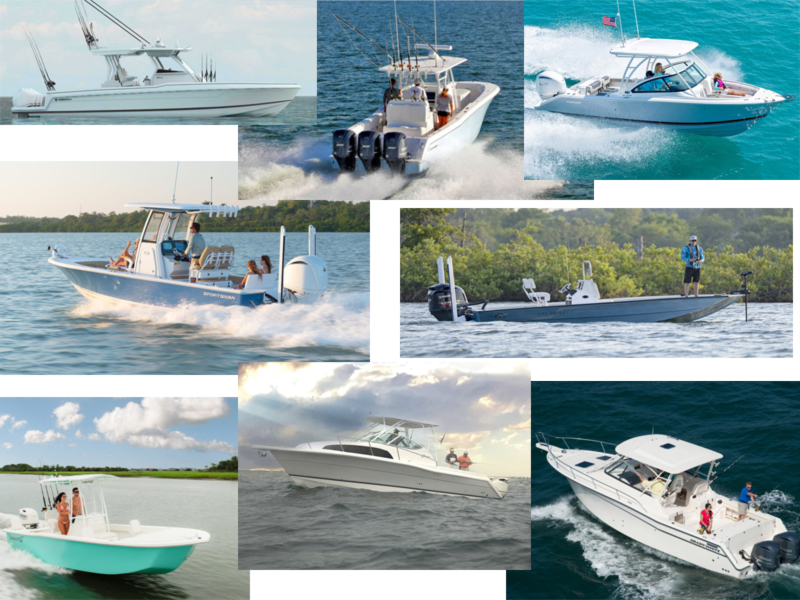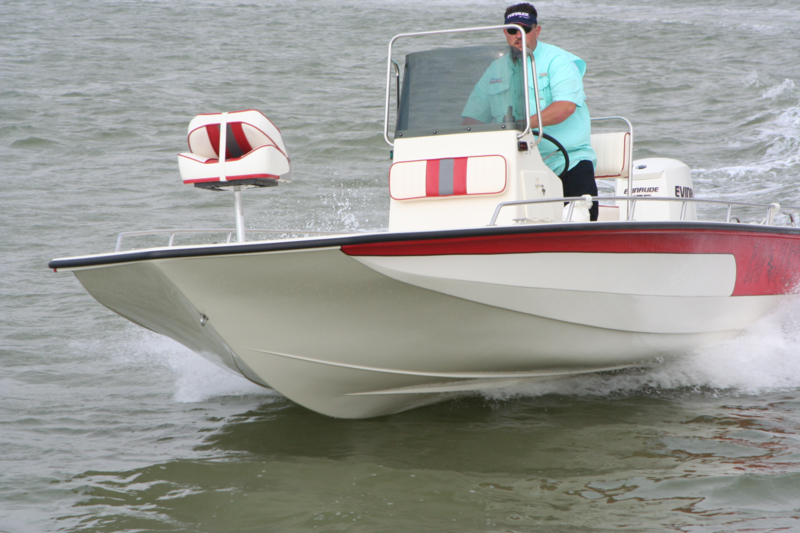Last month we looked at finding the ideal fishing boat design for your needs in our Boat Shopping Primer, and this month we’re ready to go boat shopping — strap yourselves in folks, this is going to be fun! You’ve spent months longing for a new boat, thought hard about the type that will best fit your fishing style and lifestyle, and narrowed the field down to some top contenders. You lie awake at night staring at the ceiling, envisioning rods bent over the gunwales and fishboxes overflowing with scales and slime. You’ve become a pro at detecting footsteps outside your office door and become expert at closing the tabs of webpages showing gleaming fiberglass to instead display spreadsheets before prying eyes notice what you’re up to. Finally, it’s time to get uber-serious about turning those dreams into reality.

Whether you’re walking the docks at the Bay Bridge Boat Show or headed to your local dealer to look at some tempting models, savvy buyers will look at boat shopping as an information-gathering process that allows for comparing the strengths and weaknesses of all the options, and land on a winner. Remember: there’s no such thing as a “perfect” boat. Worse yet, modern fishing boats are such complex beasts that it’s virtually impossible to compare apples to apples — there’s always an orange and a fig in the mix. Your job is to consider the following critical factors and weigh each as you personally see fit. Then, hopefully, you'll find the perfect fishing boat for you.
Boat Construction
We all want a well-built boat, and the truth of the matter is that between US Coast Guard regs, American Boat and Yacht Council standards, National Marine Manufacturers Association certification, and the Great Recession, really crappy boats are virtually quite rare in the current market. Still, some are built better than others and if you’ll use your boat hard and venture forth on fishing adventures when it’s rough, you want a boat that’s thoroughly rugged.
It’s difficult to gauge construction underneath the gel coat, and the very best way to rest assured that a boat is solidly built is to go for a sea trial and feel it underfoot. Are there vibrations running through the hull, deck, and your body every time you hit a wave? Does the boat shudder and shake? Or, does it feel like a brick coming down off of waves?
In addition to the on-water experience, there are some boat construction “tells” you can look for. When it comes to T- tops, rails, windshields, and pipework, grab ‘em and give a shake. The less they flex the better. Find out if the top is integrated with the console (best), through-bolted at the base (very good), or just screwed onto the deck (not so awesome). Deck hatches are another item to check out… by walking across them. Do you hear creaks and groans, or detect any flexing? Hopefully, the answer is no.
Also take a good look at the boat’s soft goods. Sub-par upholstery is something that can fall victim to mold and mildew, UV damage, and/or wear and tear quickly, making your new boat look shabby in just a few years. Look for vinyls which are treated with antimicrobials (those meeting ASTM International G21 standards are best) to help resist mold and mildew. They should also be UV-protected, and those ASTM standards also include an ultraviolet protection (UPF) rating: 15 to 24 is considered good, 25 to 39 is considered very good, higher is considered excellent, and 50 is the highest. For additional comparison purposes find out the weight of the vinyl a builder uses, measured in ounces per square yard. Vinyl of 28-ounces is usually considered the minimum to warrant the title “marine grade,” and more is always better.

Note that finding out these details may require a good deal of research, and you may have to first learn which vinyl manufacturer supplies the builder and what level of material they provide. Fortunately, you can also learn a lot simply by sitting in the seats and feeling the materials for yourself. Brand reputation plays a role here, too, because top-tier builders tend to use top-tier materials while lower-cost builders tend to use lower cost materials. The same holds true for canvass; when you see only Sunbrella used by a builder, you can be fairly sure they aren’t skimping on the soft goods to save a dime here and there.
One final “tell” is to use your ears as much as you use your eyes when you’re on a boat. This is another assessment that mostly takes place during the sea trial. A distinct absence of creaking and groaning as the boat moves in the waves, rattling hatches and drawers, and vibrating pieces and parts, indicates a well-built boat.
Performance
The performance you expect out of a boat is 100 percent a matter of personal preference. Some of us want to rip across the surface of the Bay at 50 mph, and others are perfectly happy to cruise at 20 mph all day long. That said, when it comes to choosing the powerplant for any given model boat, bigger is often better for several reasons. First off, smaller engines don’t necessarily mean lower operational costs. Larger engines work less to accomplish the same performance, and if a 150-horse outboard needs to run at 4500 rpm to cruise a boat at 30 mph, a 200 or 225 may hit the same speeds while turning 3500 rpm – and its fuel consumption may (though not necessarily) actually be lower at identical speeds. Also consider resale value. While a larger motor does cost more upfront, boats seen as underpowered by other people can be a tough sell when you’re ready to upgrade.
How will you know if a boat powered with X horsepower will perform up to your personal standards? As a general rule of thumb your dealer’s insight will be invaluable on this count. They usually want to make sure you’ll be happy with your boat and will give you a realistic idea of what sort of difference you’ll see with an extra 50 horsepower or going from a single to twins. Naturally, a sea trial can be illuminating on this point as well, but remember that new boats stocked by dealers virtually always out-perform what you’ll see in the real world by a couple-few mph. Once you load up with gear, fill the tanks, and bring a bunch of friends aboard, you have to expect a slight drop in both top end and cruise speed as opposed to when running a “light” boat.

Wait a sec — what about the key feature of fishability? Design and rigging will make different types of boats better or worse for specific types of fishing, which is much of what we covered last month.
Beginner Boats: Beauty in Simplicity
If you’re going to be new to the world of boat ownership, don’t be afraid to start off small and simple. Yes, bigger boats and all the goodies they come with can be mighty tempting. But a 16- to 21-foot boat has a lot more capability than most people realize, and owning one for a couple of years can provide tremendous insight that one wouldn’t otherwise have. Will you be more limited in your options when it’s blowing out? Absolutely. But here in Chesapeake Country we have countless tributaries and protected waterways, and you’ll virtually always be able to find somewhere safe and comfortable to fish. Smaller boats are easier to handle, easier to afford, easier to tow, and are one heck of a lot of fun — don’t let anyone tell you that you “need” a bigger boat when you’re buying your first ride.
